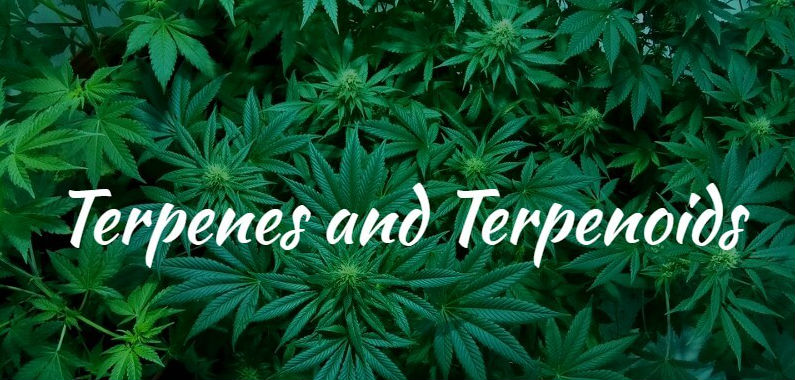Terpenes and terpenoids are compounds found in cannabis. They give the cannabis plant and the buds a diversity of aromas and distinct flavors. They are also known as essential oils, which are secreted from the sticky resin glands of the flower. Other compounds, such as tetrahydrocannabinol (THC) and cannabidiol (CBD) are also secreted from these same glands.
Regular consumers of the cannabis plant often note the terpenes and terpenoids when they smell the pungent aromas of the buds. However, according to a study conducted in 2001, from Dr. Ethan Russo, a renowned researcher, terpenes and terpenoids seem to have much wider ranging attributes, including therapeutic effects. To date, there are over 200 various terpenes and terpenoids present in the cannabis plant. They are not unique to the cannabis plant, and can be found in a variety of other plants, fruits and herbs. Terpenes are considered safe to consume, according to the United States Food and Drug Administration.
Terpenes vs. Terpenoids
Terpenes and terpenoids are terms used interchangeably.The only difference between terpenes and terpenoids is that terpenes are considered organic hydrocarbons. Terpenoids have additional atoms that have experienced oxidation. This happens when cannabis has been cured and dried. You can think of terpenes as “wet”, while terpenoids are “dried out”.
THC and one terpene (caryophyllene) bind to the brain’s receptors and this, in turn, stimulates a variety of effects. It also affects the chemical output of neurotransmitters, including serotonin and dopamine. Some of the effects discovered by researchers so far include aiding with sleep, pain relief, and anti-inflammatory properties. There is scientific evidence to suggest that terpenes work well with other cannabinoids like THC and CBD to boost their balancing properties in what is known as the “entourage effect”.
The “entourage effect” was introduced in 1998. Researchers by the names Raphael Mechoulam and Shimon Ben-Shabat both adamantly maintain that the compounds naturally found in the cannabis plant somehow work together better a synergistic way to amplify and magnify their advantageous properties. It is theorized that these compounds are not as effective, when isolated by themselves.
Two of the Most Commonly Found Terpenes
Every cannabis strain has a unique terpene and terpenoid profile. There is a unique line-up and concentration of compounds with each particular strain. Here is a look at two of the most common ones:
Myrcene- this one has a clove, musky or earthy aroma to it. Myrcene is of the most abundant terpenes produced by the plant. Sometimes myrcene can be as high as 50% of the plant’s total terpene volume. Myrcene is known to be responsible for the stereotypical smell of cannabis. This terpene is commonly found in other plants, including hops, eucalyptus, thyme, lemongrass and mango.
Limonene- plants that have a high limonene concentration usually tend to have a citrus aroma to them. This one is highly absorbed through inhaling and consumers experience a general uplift in their mood and attitude. Limonene also helps in absorbing other terpenes through the skin. According to WebMD, it may also block cancer-causing chemicals and eliminate cancer cells. However, it is important to note that a lot more research is necessary in this regard. Limonene is also found in the peelings of citrus fruits, along with also being found in peppermint, juniper, and rosemary.
https://news.medicalmarijuanainc.com/terpenes-terpenoids-matter/
https://www.medicaljane.com/category/cannabis-classroom/terpenes/#synergistic-effects
https://www.leafly.com/news/cannabis-101/infographic-what-are-cannabis-terpenes-and-how-do-they-affect-you
https://www.durangocannabisco.com/article/terpenes-what-are-they-and-why-are-they-important
https://www.ncbi.nlm.nih.gov/pmc/articles/PMC3165946/
Leave a Comment
You must be logged in to post a comment.








